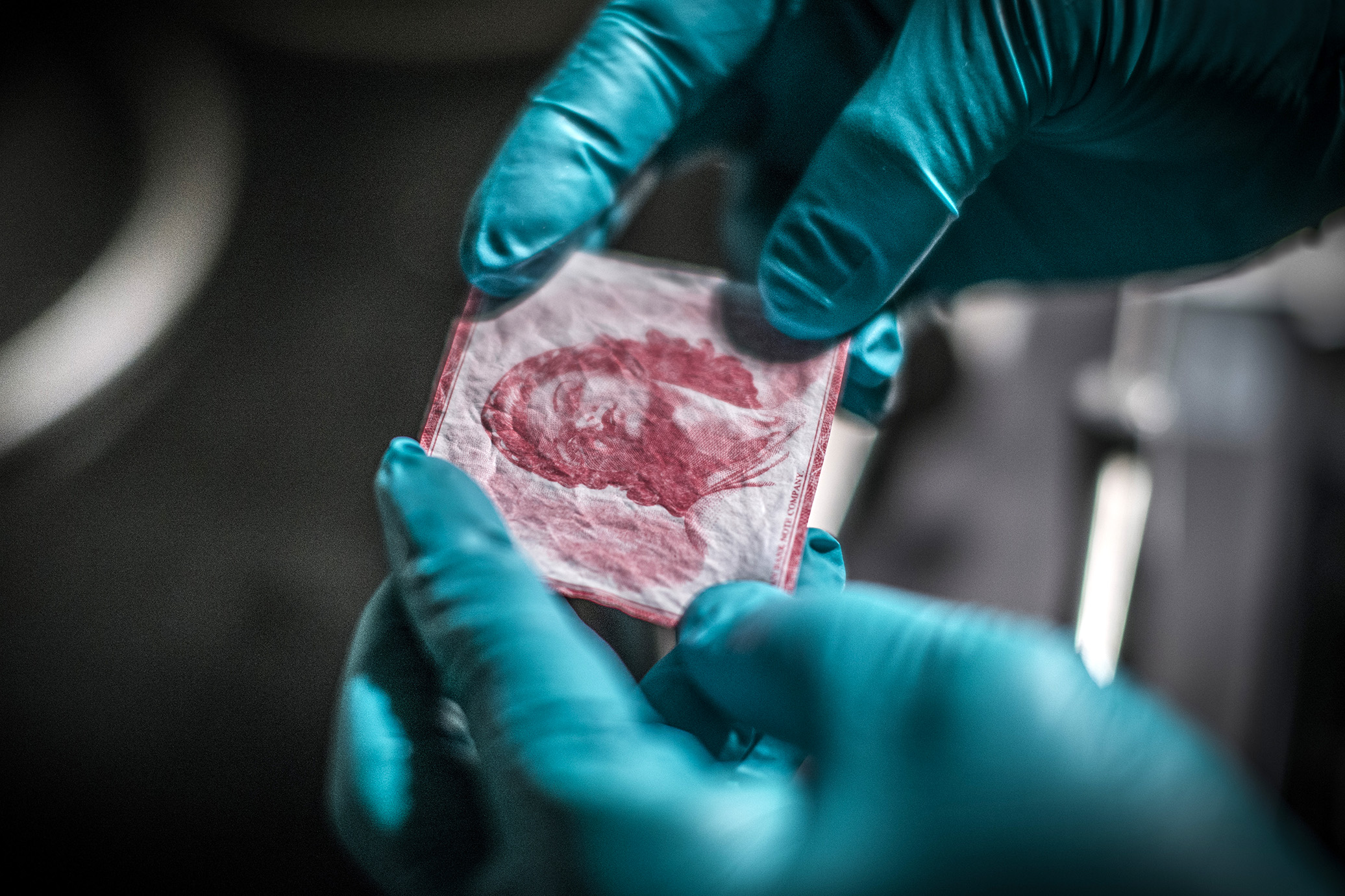4th September 2023
“No Need for Anti-Pathogen Treatment of Banknotes”
SCIENCE OR SCAREMONGERING?
There are many lessons to learn from the pandemic, not the least the importance of effective policies to protect the health and well-being of families. Getting the needed public confidence requires long-term and science-based strategies – also for central banks who faced questions around the safety of cash. Fueled by rumors, the public’s fear of contamination and touching banknotes rose during the pandemic, setting the scene for vendors selling anti-viral protection.
 Viveka Granlund is Substrate Product Manager at Crane Currency. Her message to the banknote industry is that banknote paper is safe – and there is no need for an additional anti-biocidal protection.
Viveka Granlund is Substrate Product Manager at Crane Currency. Her message to the banknote industry is that banknote paper is safe – and there is no need for an additional anti-biocidal protection.
“I actually think that anti-pathogen treatments for paper banknotes are pointless, a waste of money, hazardous to make and may even contribute to the appearance of more dangerous pathogens or problems in the future”, says Viveka Granlund.
You don’t have to spend a long time on the internet to find evidence of various bacteria and viruses on banknote surfaces, usually Staphylococcus aureus, E. coli, and Vancomycin-Resistant Enterococci (VRE). That can scare us and let central bankers believe that their banknotes are providing a vector for disease – and that the public trust may diminish as a result.
But does that mean that cash is not safe? Is there scientific evidence behind the argument for anti-pathogen treatments and do the industry need to act preventively before the next crisis?
“Banknotes are one of the most frequently handled documents in the world. With all rumors during the pandemic, it did not come as a surprise that some vendors started saying, ‘Buy this magic ingredient and your problem is solved’. But research has shown that cash is not a vector for viruses”, says Viveka Granlund.
ECB: “CASH IS SAFE TO USE”
The European Central Bank (ECB) published a paper on the risk of SARS-CoV-2 transmission via euro cash and included a summary: “Based on our test results, recent scientific literature on SARS-CoV-2 transferability and also our previous findings on the avian flu and swine flu viruses, it can be concluded that the risk of transmission via banknotes and coins is very low, and that cash is safe to use”.
Studies have indicated that soft surfaces, such as cotton banknotes, are very inefficient at transferring any pathogens that they harbor to the handler. The summary reads “Despite prolonged survival of E. coli on the Euro (up to 6 hours), transmission to the volunteers did not succeed”. The same study did, however, note that banknotes could be a vector for transmission of MRSA (methicillin-resistant staphylococcus aureus), a type of bacteria that is resistant to several antibiotics, although transfer was not demonstrated.

POSSIBLE HIGHER RISK WITH CREDIT CARDS AND POLYMER BANKNOTES
Interestingly, hard surfaces such as credit cards and polymer banknotes may present a higher risk: “Our experiments showed that the polymer structure of the Romanian Leu banknote allows growth and transmission of multi-drug resistant pathogens. This, in theory, could contribute to the transmission of microorganisms within the Romanian community. Countries using polymer-based banknotes should take this into consideration”
While paper isn’t actively anti-microbial, microbes tend to die off on paper banknote surfaces. There is little or no food for them (even on dirty banknotes) and their survival time tends to be between 6 and 36 hours. In general, banknotes tend to sit dormant in wallets, ATMs and cash centers long enough for pathogens to die off naturally.
ENVIRONMENTAL RISK OF ADDING ANTI-MICROBIAL MATERIAL
Using anti-pathogen treatment can also backfire. Increasing the amount of anti-microbial material in the environment does have the long-term effect of creating more resistant microbes. Issuing a new set of anti-microbial notes as a response to an outbreak could then make the situation even worse.
There are also well-known chemical hazard issues with the handling of anti-pathogenetic paper additives during manufacture. The effect on the skin of sensitive individuals who handle circulating notes is still unknown.
“We should all be well-prepared for the next pandemic but at the same time be fully aware of the dangers of rumors and scaremongering. I therefore invite the industry to continue taking a scientific approach to banknote production and avoid unnecessary and dangerous solutions”, says Viveka Granlund.